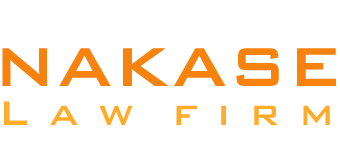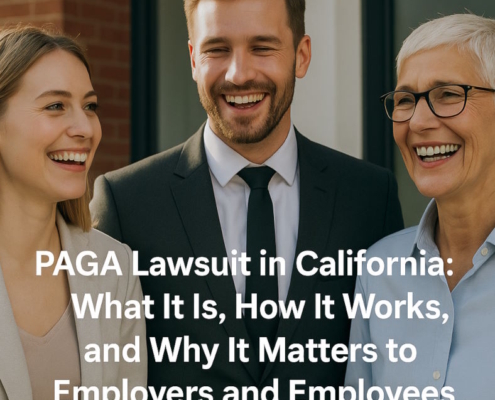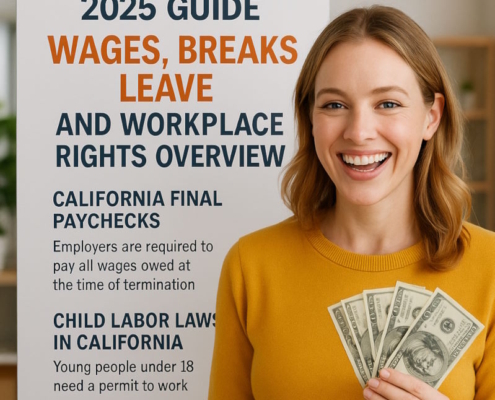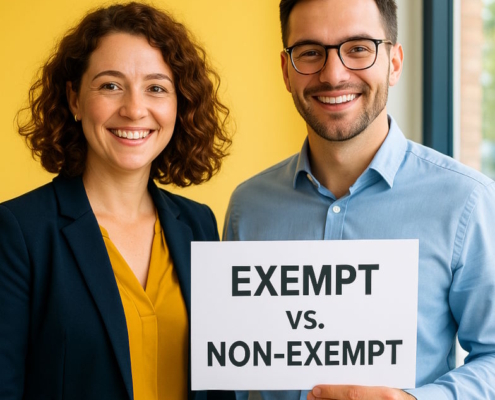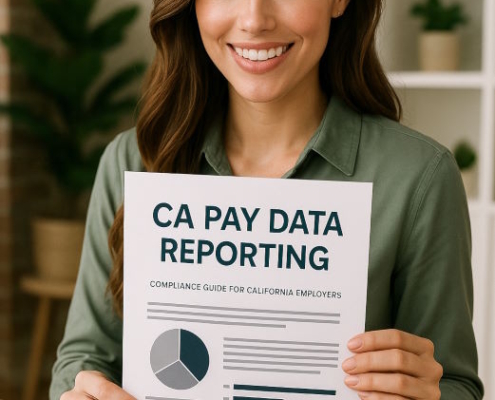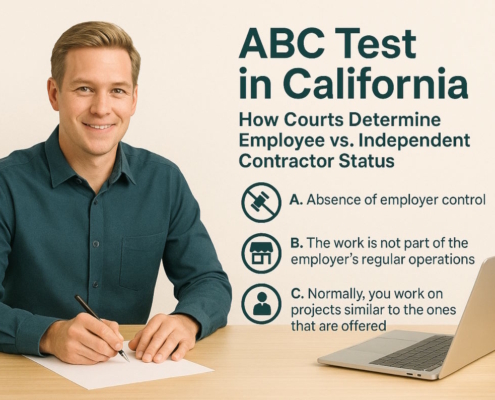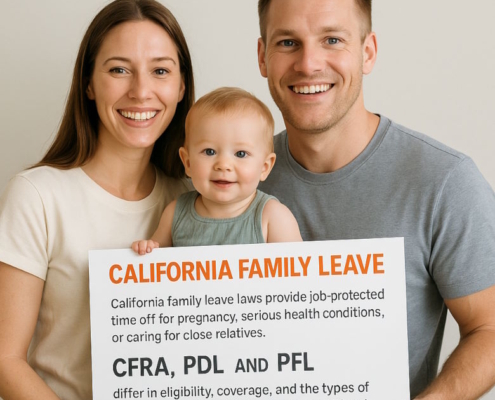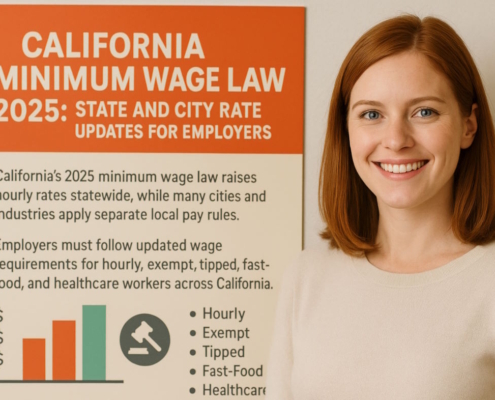The New Changes to PAGA Still Leave a Lot Intact
In 2024, workers’ rights groups faced a potential disaster but managed to avoid it. Led by the California Labor Federation, I was part of a team that spent months negotiating a deal to remove an anti-PAGA initiative from the November ballot. Private Attorneys General Act of 2004 (PAGA), under California Labor Code sections 2698, was at risk of being eliminated.
Example: Imagine if a law that lets workers fight for fair pay was about to be canceled, but groups worked hard to save it.
What Was at Stake with the Anti-PAGA Initiative?
The California Chamber of Commerce pushed for an initiative that would essentially end PAGA. If passed, this initiative would have taken the power to enforce wage laws away from private attorneys and given it only to the state Labor Commissioner. However, the Labor Commissioner’s office already struggles to keep up with cases. Removing private attorneys could cause so many delays that workers might not get justice in a reasonable time.
Example: Think about a long line at a store with only one cashier. Adding more customers would make the wait almost endless.
Why is PAGA Important for Fighting Wage Theft?
PAGA has become a key tool to help California workers reclaim wages when forced arbitration and class action waivers stop other options. Recently, the U.S. Supreme Court confirmed that the Federal Arbitration Act does not require employees to give up their right to file PAGA claims on behalf of other workers. The Viking River Cruises decision says only the representative’s individual PAGA claim can be forced into arbitration, not the entire case on behalf of other employees.
Example: If a worker’s claim is like a puzzle piece, they can still put it in the larger puzzle, even if they have to handle their own piece separately in arbitration.
Viewing the New PAGA Amendments as a “Reset,” Not a Final Outcome
While the new PAGA amendments are a win, there’s still work to do to protect workers. Instead of a complete victory, think of this as a reset. This is a second chance for the plaintiffs’ attorneys to protect PAGA and make sure it remains a strong tool for workers.
Example: It’s like when a game gives you an extra life—it’s not the end, but another chance to keep playing.
What Do the PAGA Amendments Change?
Most of the new changes to PAGA took effect on June 19, 2024, and do not apply to cases filed before that date. This means there are now two versions of PAGA: the original version for cases before June 19 and an amended version for cases and notices filed afterward. Additionally, new cure processes will start on October 1, 2024, allowing time for the Labor Commissioner and courts to prepare.
Example: Think of it like a new set of rules for a game. If you started playing before the rules changed, you stick to the old ones. But any new players follow the updated rules.
Limits on Who Can File PAGA Claims Under the New Rules
New Rules for Who Can File a PAGA Claim
One major change in the new PAGA amendments reverses the ruling from the Huff v. Securitas Security Services case. In that case, the court decided that a worker could bring a PAGA claim for violations they didn’t personally experience, as long as they suffered at least one violation. Now, under section 2699(c)(1) of the Labor Code, workers can only file a PAGA claim if they experienced each specific violation themselves during the required time period.
Example: Imagine a group project where only those who actually worked on each task can talk about issues with that task, instead of anyone in the group.
Exception for Qualified Non-Profit Organizations
There is an exception to this rule for specific non-profit legal aid groups. Under section 2699(c)(2), these non-profits can still make PAGA claims for violations the representative plaintiff didn’t personally experience. However, they must meet strict requirements, like having five years of experience in handling PAGA cases. This exception might encourage private law firms to work with non-profits, but any sign of abuse could lead to lawmakers taking away this privilege.
Example: Think of it as a “veteran’s pass” that allows only experienced players into a restricted area. If others misuse it, the pass might be taken away.
New PAGA Amendments Aim to Boost Employer Compliance
Encouraging Employers to Follow the Rules
The new amendments include steps to encourage employers to follow labor laws. Before filing a PAGA lawsuit, a worker must send a detailed notice to the California Labor & Workforce Development Agency (LWDA) and give a copy to their employer. Workers also have the right to request employment records from their employer under specific sections of the Labor Code.
Example: Think of it like giving the school a warning about a rule-breaking issue before filing an official complaint.
Penalties Reduced for Reasonable Efforts to Comply
If an employer has taken “all reasonable steps” to follow the law before receiving a PAGA notice or records request, they may face only 15% of the standard penalty. “Reasonable steps” include things like regular payroll audits, having clear written policies, training supervisors on labor laws, and addressing issues when they come up. The employer’s size, resources, and the seriousness of the violations are also considered to determine if their efforts were reasonable.
Example: If a company regularly checks pay records and trains its managers, it may get a smaller penalty if a worker files a claim.
Higher Penalties for Ignoring Compliance Warnings
If an employer takes “all reasonable steps” to fix issues after receiving a PAGA notice or records request, they may still face a reduced penalty, capped at 30%. However, this reduction only applies if the employer’s actions were not “malicious, fraudulent, or oppressive.” This rule aims to encourage employers to correct problems quickly when notified.
Example: If a store owner is warned about safety issues, and they make fixes right away, they might face a smaller fine.
Restructured Penalties Under PAGA: Changes in Penalty Limits
Lower Penalties for Minor Errors on Wage Statements
The new PAGA amendments adjust penalties for mistakes on wage statements under section 226. These cases were heavily criticized by those who wanted to repeal PAGA. Now, if the employee can “promptly and easily” see accurate information on their wage statement, or if there’s no confusion about who their employer is, penalties are capped at $25 per pay period.
Example: Imagine if a student’s report card had a small mistake, like a missing middle initial, but the grades were clear. The penalty for this minor error would be small.
Limiting “Stacked” Penalties for Multiple Violations
A common employer defense against PAGA claims is that “stacking” penalties—adding multiple fines for related issues—shouldn’t be allowed. The amendments restrict stacking when penalties relate to the same underlying issue. For example, if an unpaid wage violation also affects wage statements or causes late payments, only one penalty will apply for these combined violations. This limit applies to unpaid wage violations under sections 201, 202, and 203, and to wage statement issues under sections 204 and 226 if the errors were not intentional.
Example: If a person gets a parking ticket for staying too long and has a broken meter at the same spot, they’d only get one ticket, not two.
Reduced Penalties for One-Time, Minor Issues
The amendments also reduce penalties for isolated, one-time mistakes, such as an issue that lasted for less than 30 days or only four pay periods. If the employer proves this was an isolated event, the penalty is $50 per pay period instead of a larger fine.
Example: If a school cafeteria overcharges students for a month by mistake, it might face a small fine if it was a one-time error.
Higher Penalties for Malicious or Repeated Violations
Employers face a higher default penalty of $200 per pay period if their violation was malicious, fraudulent, or oppressive. This also applies if the Labor Commissioner or a court found the employer’s violation unlawful within the past five years.
Example: If a store owner knowingly shortchanges their workers over multiple pay periods, the fine could increase because the behavior was intentional.
Judges Can Adjust Penalties to Ensure Fairness
The amendments give judges the ability to raise or lower penalties if sticking to the cap would lead to an unfair result. This flexibility helps prevent harsh penalties for minor mistakes or insufficient penalties for serious violations.
Example: If a worker missed out on a large amount due to a company’s repeated mistakes, a judge could increase the fine to make it fair.
Strengthened Enforcement and New Rights Under PAGA
New Power for Courts to Stop Future Violations
A big improvement with the recent PAGA amendments is the power for courts to issue “injunctive relief.” This means that, beyond penalties, courts can now order employers to fix specific practices, like reclassifying workers as employees instead of contractors. Previously, employers could sometimes treat penalties as just a business expense without changing their behavior. Now, courts can make sure workplaces change to prevent future violations.
Example: Imagine if a teacher could give both a penalty and require a student to improve their study habits to stop future issues.
Increased Share of Penalties for Employees
Another change benefits workers directly. The percentage of civil penalties that goes to employees has increased from 25% to 35%. PAGA cases are designed so the state receives most of the penalties, but this boost allows more of the funds to go to affected workers.
Example: Think of it as increasing the prize in a group fundraiser so each participant takes home more of the earnings.
Codified Rules for Streamlined Trials
The recent Estrada v. Royalty Carpet Mills case allowed courts to limit evidence at PAGA trials, which is now part of the official rules. This means courts can focus the trial on essential evidence, making cases easier to manage without adding a “manageability” requirement for PAGA cases.
Example: It’s like a debate where the judge limits speakers to key points, helping ensure a clear outcome.
New Process for “Curing” Violations
The biggest change is the expanded right to “cure” violations, giving employers a chance to fix problems before facing full penalties. New curable violations include wage statement errors, meal breaks, rest periods, overtime, minimum wage issues, and expense reimbursements.
Example: If a store makes a mistake on prices, they can fix it before getting fined if they correct all affected transactions.
Cure Process for Small Employers
For businesses with fewer than 100 employees, the cure process begins by submitting a “confidential proposal” to the LWDA within 33 days of receiving notice of the violations. To complete the cure, employers must pay any owed wages and damages. However, this cure option can only be used once per year for the same type of violation.
Example: Imagine a small business gets a warning about a payroll mistake. They fix it and make sure they only need this cure option once a year.
Cure Process for Larger Employers: The Early Evaluation Conference (EEC)
For employers with 100 or more employees, the cure process happens in court after a lawsuit begins. These employers can request an “Early Evaluation Conference” (EEC) to resolve issues early on. If they intend to fix violations, they must state this when the case begins. If the judge sees valid reasons, they can deny the employer’s request for an EEC. The EEC must happen within 70 days, where the employer can present evidence showing they cured the violations.
Example: If a large company is sued for late wages, they can request a meeting to prove they fixed the problem and aim to resolve the case early.
Conclusion: Positive Changes and Strategies to Consider
The recent amendments bring both challenges and opportunities. Here’s a guide on how to leverage these changes:
- PAGA Still Protects Workers, Even with Arbitration Agreements
The new law preserves PAGA, allowing employees to bring group claims for civil penalties, even if they signed arbitration agreements.
Example: If a worker signed an arbitration agreement, they can still join a group action under PAGA to address workplace violations.
- Case Law on Standing Remains Strong
The decision in Adolph v. Uber Technologies, Inc. (2023) ensures that employees keep the right to bring PAGA claims, even if individual claims go to arbitration.
Example: An employee can still pursue a PAGA claim for a group even if their individual case is sent to arbitration.
- Consider Teaming Up with Non-Profits for Broader Impact
For cases where non-profit legal aid groups are allowed to represent issues employees haven’t directly faced, co-counseling with qualified non-profits could be strategic.
Example: Partnering with a non-profit could allow broader claims in cases where workers face systematic wage issues.
- Use Injunctive Relief to Promote Lasting Change
Requesting injunctive relief can help make long-term improvements in workplaces, beyond just paying penalties.
Example: A company might be ordered to update its payroll practices so that future wage theft is prevented.
- Analyze Employers’ “Reasonable Steps” for Compliance
During discovery, look into the specific steps the employer took to correct violations to ensure they’re adequate.
Example: If an employer only took basic steps to fix wage issues, you can argue for full penalties based on inadequate efforts.
- Understand the Cure Process for Small Employers
Learning to use the new agency cure process can help maximize recovery for affected employees, including unpaid wages and interest.
Example: If a small business attempts to “cure” a violation, employees should know how to use this process to recover what they’re owed.
- Educate Courts on Early Evaluation Conferences (EECs)
Helping courts understand the burden on employers to properly use the EEC process will ensure that it’s used fairly.
Example: If an employer doesn’t genuinely intend to fix the issue, the court can reject their request for an EEC.
Wage Theft Remains a Serious Issue
A February 2024 report by the UCLA Labor Center highlights that wage theft is still widespread in California. Nearly 600,000 workers face wage violations each year, losing about $2 billion in total. Unfortunately, only 2% of these lost wages—around $40 million—are recovered through the Labor Commissioner. This underscores the need for strong enforcement.
Example: Think of it like a broken dam holding back millions in stolen wages; without PAGA, most of that flood would go unrecovered.
PAGA’s Future and Your Role
The threat to PAGA was real, and while some amendments may seem like setbacks, PAGA remains a vital tool to enforce wage theft laws. The new rules encourage employers to follow the law while preserving workers’ rights to seek justice. Use PAGA carefully and strategically to protect California’s workforce.
